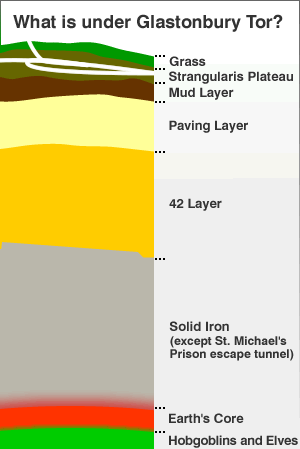The most common question that people ask when they are considering a visit to Glastonbury Tor is “are dogs allowed?”
Surprisingly, it’s not just dog owners who ask this question, but also owners of other pets who are considering a visit and want to know if they will be welcomed.
The answer is simple – under certain conditions, most breeds of dog are welcome to visit the tor, and subject to passing a simple evaluation test may also be able to join the queue to use one of the many dog trolleys that are provided for pets that may otherwise struggle to make it all the way to the top.
There is a very simple weeding-out process that enables the quality of animal visitors to be kept high, and make sure everyone enjoys the view from the top of the tor without ruining it for anyone else. Your pet just has to pass the following simple tests in order to be awarded a yellow wrist-band that allows them entry to the tor for up to a week:
- Is this pet visiting the tor of its own free will? Most animals appear bouncy and happy at the prospect of scaling Glastonbury Tor, but any animal that looks sullen, grumpy, or pulls in the wrong direction on its lead may be referred to the resident animal psychologist for evaluation before being allowed onto the tor. The psychologist’s decision is final, although you do have the right to appeal to the Glastonbury Vets Ombudsman.
- Is this a Shih-Tzu that has been disguised as a more butch breed of dog? Any attempt to pass a Shih-Tzu off as anything other than a cat could cause it to be banned from the tor for up to six weeks.
- Is this a Somerset Strangler that is being repatriated by someone who did not realise what bad pets they make? There are official channels for repatriation. Sneaking one of these potentially deadly hamsters through the Nothing To Declare channel could result in the severest of penalties.
Notes for human visitors
Human visitors should also note – now that Glastonbury Tor has achieved mountain status you should bring plenty of provisions so that if the weather changes unexpectedly at this high altitude you won’t get caught out. There are, after all, few more embarrassing things than having the air sea rescue services called out, when the simple measure of bringing a few vital supplies could have seen you safely returning to basecamp under your own steam.
There is a simple mnemonic – KITES. Visitors to the tor learn about this in the information area at the gift shop:
K – Kendal Mint Cake – a standard kilogram bar should suffice on a day trip. Remember to bring some for every member of your party, including pets.
I – Igloo construction skills – if the weather should change at high altitude it is always worth knowing how to fashion a rudimentary igloo from the permanent icecap on Glastonbury Tor
T – a Tent or bivouac – in case the weather turns nasty. Remember there are no toilet facilities for a thirty mile radius around Glastonbury Tor so you should consider bringing a porta-loo.
E – Elvish principles – think back to the last Lord Of The Rings film you saw – which race was always best equipped to fend for themselves when out in the wilderness? The Elves – that\’s who. All you need to do is think about how one of the elves would fend for themself in a tricky situation. Obviously we are referring to one of the principle characters, not one of the red-shirted CGI cannon-fodder who have their head sliced off by an Uruk-Hai in the siege of Gondor.
S – Swiss Army Knife – these are always useful, although it will need to be surrendered if you want to visit the toast-making display at St. Michael’s Tower.





